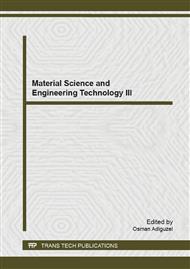p.373
p.379
p.385
p.393
p.397
p.402
p.406
p.412
p.419
Effect of Cutting Parameters on Tool Life: Case Study Twist Drill
Abstract:
This study discusses the relationship between various parameters of drilling and cutting tools using an analytical model is developed for predicting life and wear of twist drills by a temperature dependent friction law. The model permits the continuous determination of the cutting forces along the cutting lips and chisel edge which can be combined with the dynamics forces of the initial penetration and the chip evacuation forces in drilling .The approach is based on representing the cutting forces along the cutting lips as a series of oblique elements. Similarly, cutting in the chisel region is treated as orthogonal cutting with different speeds depending on the radial location. The chip flow is determined by the assumption that the friction force on the tool face is collinear to the chip flow direction. The contact length between the chip and the tool and the temperature distribution at the tool–chip interface which has an important effect on the tool wear were predicted. The model permits to predict the chip flow direction, the contact length between the chip and the tool and the temperature distribution at the tool–chip interface. Using the thermo-viscoelastic model and the temperature friction law, the tangential forces, friction coefficient and contact length on the cutting element as a function of radius, for different feed rate and cutting speed, are obtained. The proposed model results are compared with experimental results and good agreement is obtained.
Info:
Periodical:
Pages:
397-401
Citation:
Online since:
April 2015
Authors:
Keywords:
Price:
Сopyright:
© 2015 Trans Tech Publications Ltd. All Rights Reserved
Share:
Citation:


